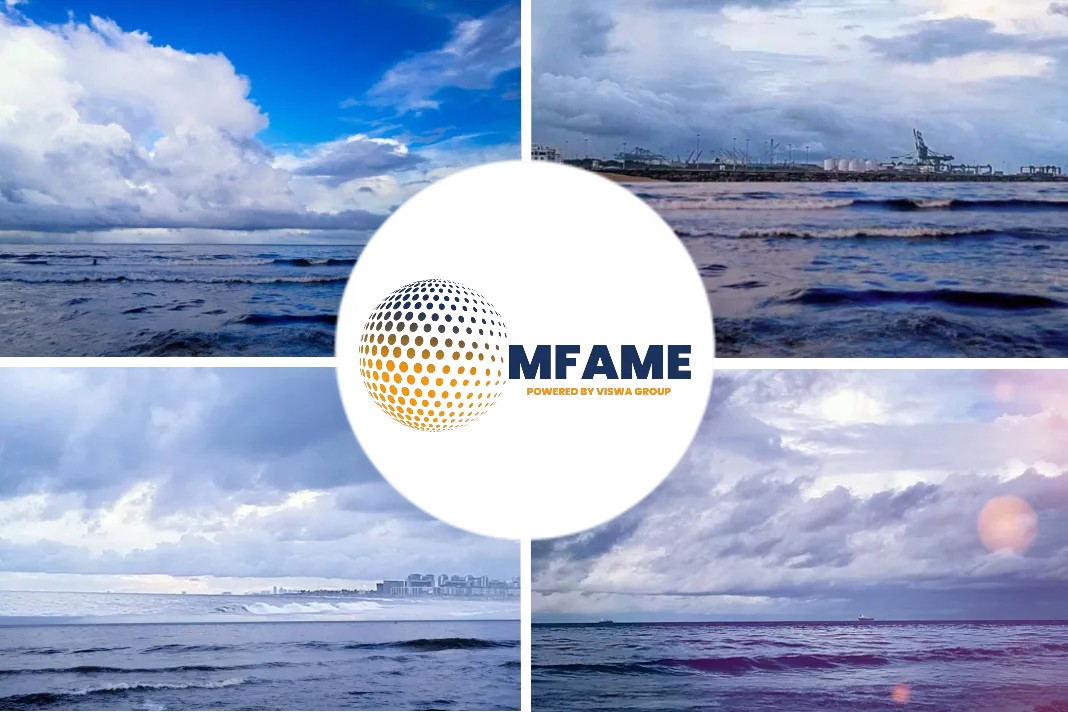- The use of liquefied natural gas (LNG) as a marine fuel grew nearly 30% between 2012 and 2018, leading to an estimated 150% increase in methane emissions from international shipping over that period.
- The FUgitive Methane Emissions from Ships (FUMES) project will measure methane emissions from LNG-fuelled ships under real-world conditions using in-stack continuous emissions monitoring, drones, and helicopters.
- Ships are therefore becoming a new and growing source of methane emissions and yet few studies have measured real-world emissions from LNG-fuelled ships.
Background
The use of liquefied natural gas (LNG) as a marine fuel grew nearly 30% between 2012 and 2018, leading to an estimated 150% increase in methane emissions from international shipping over that period, according to the Fourth IMO Greenhouse Gas Study.
These estimates are uncertain because they rely on emission factors developed from the existing literature, which represent only a few studies focused onlimited on-board or laboratory measurements. The amount of methane emitted by LNG-fuelled ships is a function of engine type, engine load, and fugitive emissions from fuel tanks and cargo tanks.
More real sailing data are needed to understand the actual methane emissions from LNG-fuelled ships under real-world conditions. Also, improvements in engine design over recent years may not be fully captured in the earlier studies.
Furthermore, because LNG-fuelled ships are capable of using both fossil and renewable fuels, understanding the conditions under which methane emissions are high or low becomes a key component in identifying a green pathway for shipping.
Project overview
The FUgitive Methane Emissions from Ships (FUMES) project will measure methane emissions from LNG-fuelled ships under real-world conditions using in-stack continuous emissions monitoring, drones, and helicopters. Its ambition is to produce the largest, most comprehensive dataset of real sailing methane emissions from LNG-fuelled ships to date, including from their engines, fuel tanks, and cargo tanks.
The project runs through December 2023, with measurements occurring in 2022 and a peer-reviewed white paper drafted and published in 2023. We will measure methane slip from marine engines as well as fugitive emissions from fuel tanks and cargo tanks. Because methane slip is related to engine technology, our focus will be on measuring emissions from both low-pressure dual-fuel (LPDF) engines and from high-pressure dual-fuel (HPDF) engines.
The latter is known for its low methane emissions but other engine factors such as age may also play a role. In FUMES, we aim to directly measure methane emissions from as many LNG-fuelled ships as possible over the course of the project. Emissions of nitrogen oxides (NOx) will also be measured and reported. We intend to publish our results in a peer-reviewed, publicly available white paper.
We expect that the results, which will include estimated methane and NOx emission factors by engine type for the ships we measure, will inform ongoing policy deliberations at the International Maritime Organization and the European Union on how to develop and enforce regulations that reduce methane and NOx emissions to mitigate shipping’s climate and air quality impacts.
Project activities
The project consists of four measurement campaigns. The onboard campaign will measure methane emissions from two ships using a combination of in-stack and drone-mounted sensors. If possible, one ship will use a 4-stroke LPDF engine, and one will use a 2-stroke HPDF engine.
The drone plume campaign will measure methane emissions from as many LNG-fuelled ships as possible as they enter or exit European ports. Potential ports currently include Rotterdam, Antwerp, and Barcelona.
Measurements will occur over the course of the summer, broken up into several stints. The drone fugitive campaign will aim to quantify total fugitive methane emissions from LNG-fuelled ships under different in-port operations such as berthing, anchoring, bunkering, or loading/unloading LNG cargo.
Currently, we expect to measure in Rotterdam in the summer. The helicopter campaign will measure methane emissions from LNG-fuelled ships in Danish waters over the full course of 2022.
Why focus on methane?
Methane contributes to climate change, and its global warming impacts are especially strong in the first decades after it is emitted. Methane’s 100-year global warming potential is 30 times stronger than the same amount of carbon dioxide according to the Intergovernmental Panel on Climate Change (IPCC).
The 20-year global warming potential is even stronger at 82.5. Ships use methane in the form of LNG. While methane makes up only a small proportion of total fuel consumption in the global shipping fleet today (approximately 3% according to the Fourth IMO Greenhouse Gas Study), methane emissions have grown quickly in recent years.
As of February 2022, there are now 1,050 ships that can run on LNG with more than 700 additional LNG-capable ships on order, according to Clarksons Research Service. This is up from approximately 350 ships in 2012, according to the ICCT. Between 2012 and 2018, methane emissions from ships grew 150% according to the Fourth IMO Greenhouse Gas Study, compared to a 10% increase in carbon dioxide emissions over the same period.
Much of the increase in methane emissions is suspected to be because ships use engines that emit significant amounts of unburned methane to the atmosphere. By capacity, 15% of new bulk carriers, 30% of new container ships, 40% of new tankers, and 50% of new cruise ships will be capable of using LNG, according to data from Clarksons.
Ships are therefore becoming a new and growing source of methane emissions and yet few studies have measured real-world emissions from LNG-fuelled ships. In the future, fossil LNG may be gradually replaced by renewable liquefied methane. Even then, it will be important to be able to calculate the potential GHG reductions of renewable methane, taking into account methane emissions from the vessel.
Did you subscribe to our daily newsletter?
It’s Free! Click here to Subscribe!
Source: icct.org






















